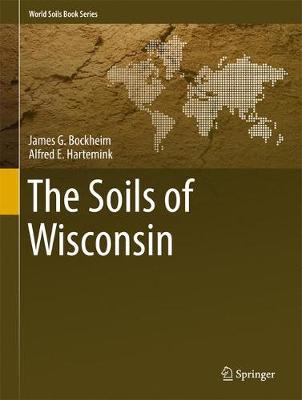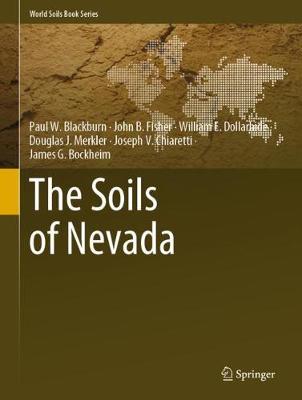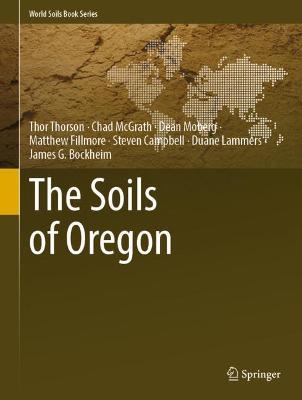World Soils Book
3 total works
The Soils of Nevada
by Paul W. Blackburn, John B. Fisher, William E. Dollarhide, Douglas J. Merkler, Joseph V. Chiaretti, and James G. Bockheim
This book discusses Nevada in the context of the history of soil investigations; soil-forming factors; general soil regions; soil geomorphology; taxonomic structure of the soils; taxonomic soil regions; soil-forming processes; benchmark, endemic, rare, and endangered soils; and use of soils.
With an average mean annual precipitation of 175 mm (7 in), Nevada is the driest state in the USA. More than three-quarters (89%) of the state has been mapped and the first soil survey was completed in 1909. Nevada is divided into 10 major land-resource areas and features two large deserts (the Great Basin Desert and the Mojave Desert), and over 100 north–south trending enclosed basins separated by mountain ranges (Basin and Range Province), several of which have peaks exceeding 3,400 m. Further, the soils of Nevada represent seven of the 12 globally recognized orders, 29 suborders, 69 great groups, and over 1,800 soil series, and some of the classic research on the origin of duripans and petrocalcic horizons was conducted in the state. This book presents the first report on the soils of Nevada and provides the first soil map of Nevada utilizing soil.
The Soils of Oregon
by Thor Thorson, Chad McGrath, Dean Moberg, Matthew Fillmore, Steven Campbell, Duane Lammers, and James G. Bockheim
This book is the only comprehensive summary of natural resources of Oregon and adds to World Soil Book Series state-level collection. Due to broad latitudinal and elevation differences, Oregon has an exceptionally diverse climate, which exerts a major influence on soil formation. The mean annual temperature in Oregon ranges from 0°C in the Wallowa and Blue Mountains of northeastern Oregon to 13 °C in south-central Oregon. The mean annual precipitation ranges from 175 mm in southeastern Oregon to over 5,000 mm at higher elevations in the Coast Range. The dominant vegetation type in Oregon is temperate shrublands, followed by forests dominated by lodgepole pine, Douglas-fir, and mixed conifers, grasslands, subalpine forests, maritime Sitka spruce-western hemlock forests, and ponderosa pine-dominated forests.
Oregon is divided into 17 Major Land Resource Areas, the largest of which include the Malheur High Plateau, the Cascade Mountains, the Blue Mountain Foothills, and Blue Mountains. The single most important geologic event in Oregon was the deposition of Mazama ash 7,700 years by the explosion of Mt. Mazama. Oregon has soil series representative of 10 orders, 40 suborders, 114 great groups, 389 subgroups, over 1,000 families, and over 1,700 soil series. Mollisols are the dominant order in Oregon, followed by Aridisols, Inceptisols, Andisols, Ultisols, and Alfisols. Soils in Oregon are used primarily for forest products, livestock grazing, agricultural crops, and wildlife management. Key land use issues in Oregon are climate change; wetland loss; flooding; landslides; volcanoes, earthquakes, and tsunamis; coastal erosion; and wildfires.


